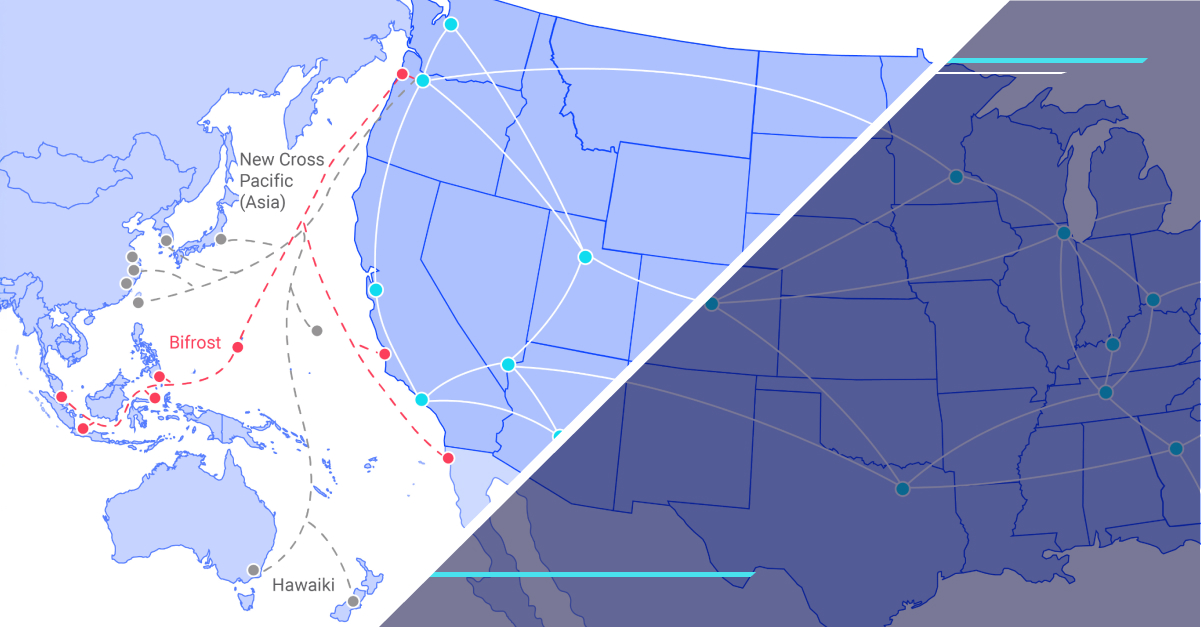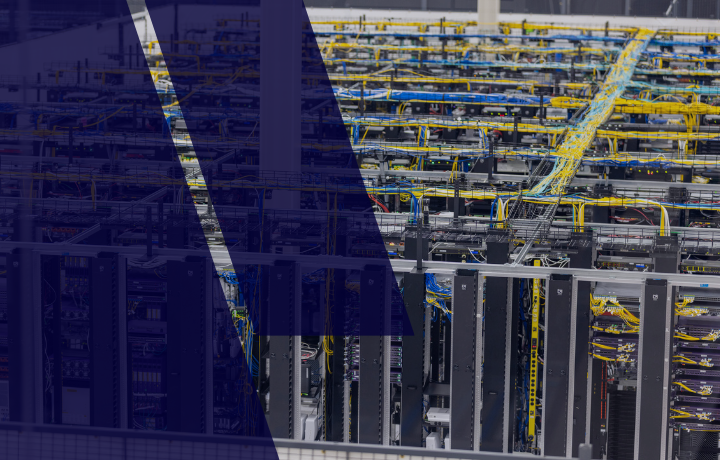Cloud cost optimization: Strategies and best practices
Cloud cost optimization is the practice of reducing cloud spending while maintaining or improving application performance and business value. For most enterprises, cloud bills have become one of the fastest-growing line items in the IT budget, and without clear strategies to manage these expenses, organizations can quickly find themselves spending 30-40% more than necessary.

The challenge isn’t just about finding ways to spend less. It’s about spending smarter. That means understanding where your money goes, eliminating waste, and making informed decisions about which workloads belong in which environments. For IT leaders and FinOps teams, getting this right can mean the difference between cloud investments that accelerate the business and cloud sprawl that drains resources.
Why cloud costs spiral out of control
Most organizations don’t set out to overspend on cloud. The problem develops gradually as teams adopt cloud services, scale workloads, and add new capabilities, and several factors contribute to runaway cloud spending.
The complexity of cloud pricing models
Cloud providers offer thousands of service combinations, each with its own pricing structure. Compute instances alone can vary based on region, instance family, operating system, and commitment level. Add in storage tiers, data transfer fees, API calls, and support plans, and the billing becomes difficult to predict. Many teams simply accept the monthly invoice without understanding what drives the costs.
Lack of visibility and cost attribution
When cloud resources aren’t properly tagged or assigned to specific teams, projects, or cost centers, finance and engineering lose the ability to track spending. Resources become orphaned. Teams deploy infrastructure without knowing the price tag. By the time someone notices, months of unnecessary charges have accumulated.
Growth, sprawl, and overprovisioning
Developers often provision resources for peak capacity, then leave them running at low utilization. Test environments stay active overnight and on weekends. Old snapshots and volumes pile up. As the organization grows, these small inefficiencies multiply, and they end up paying for capacity they don’t use and resources they forgot existed.
Core principles of cloud cost optimization
Sustainable cloud cost management requires more than one-time cleanups. It demands a shift in how your organization thinks about cloud spending.
Visibility, tagging and cost attribution
You can’t optimize what you can’t see. Comprehensive tagging strategies let you track spending by business unit, application, environment, or project. This visibility creates accountability. When teams see their actual cloud consumption, they become more thoughtful about resource usage. Proper cost attribution also helps finance teams allocate expenses accurately and make better budgeting decisions.
Governance, accountability and FinOps culture
Cloud cost optimization succeeds when everyone shares responsibility for spending. FinOps practices bring together finance, engineering, and operations to collaborate on cloud financial management. This means setting policies for resource provisioning, establishing approval workflows for large deployments, and creating feedback loops so teams understand the financial impact of their technical decisions. Engineers with real-time cost data and finance teams who understand technical constraints make decisions that balance performance with economics.
Continuous optimization vs. one-time cuts
Treating cloud cost optimization as a one-time project misses the point, as cloud environments change constantly. New services launch. Workloads scale. Requirements shift. Effective optimization requires continuous monitoring, regular reviews, and automated responses to cost anomalies. Organizations need ongoing practices, not one-off campaigns.
Proven tactics and strategies
Once you have visibility and the right organizational structure, specific tactics can reduce spending significantly. Different workloads have different cost profiles, and a hybrid approach often delivers better results than trying to optimize everything within a single cloud provider.
Here’s how enterprises are cutting costs without sacrificing performance.
Rightsize compute and storage
Most workloads run on instances that are larger than necessary. Rightsizing means matching instance types to actual resource consumption. If your application uses 20% of available CPU and memory, you’re likely overpaying. Downsizing instances or switching to different instance families can cut compute costs by 30-50% without affecting performance.
Start by analyzing CPU, memory, disk, and network utilization over at least two weeks to capture usage patterns. Instances that consistently run below 40% utilization are prime candidates for downsizing. Newer instance generations often deliver better performance at lower costs. For enterprise organizations, this analysis frequently reveals an uncomfortable truth: some workloads that seem expensive in public cloud would cost significantly less in private cloud or colocation environments, especially when sustained high utilization rates are factored in.
Shut down idle/unused resources
Development and staging environments rarely need to run 24/7. Shutting down non-production resources during off-hours can reduce costs by 65-75% for those workloads. Automated scheduling makes this easy. The same principle applies to forgotten resources such as old test instances, unattached volumes, and outdated snapshots. Regular cleanup sweeps prevent this waste from accumulating.
Use reserved instances, savings plans, spot/preemptible
For stable, predictable workloads, committed use discounts offer significant savings. Reserved instances and savings plans typically reduce compute costs by 30-70% compared to on-demand pricing. Spot instances work well for fault-tolerant batch processing, offering discounts up to 90%. Success depends on matching commitment levels to actual usage patterns: overcommit and you waste money on unused capacity, undercommit and you leave savings on the table.
However, committed pricing creates risk. If your usage drops, you’re paying for capacity you don’t need. If you underestimate, you miss potential savings. This is where hybrid cloud strategies provide flexibility. Reserve capacity for your baseline load in public cloud, but consider moving stable, high-utilization workloads to dedicated infrastructure where you control the economics directly. Colocation and private cloud often deliver better unit economics for workloads that run consistently at high capacity.
Autoscaling and dynamic scaling policies
Rather than provisioning for peak load all the time, autoscaling adjusts capacity based on demand. This means you pay for resources only when you need them. Well-configured scaling policies can reduce costs by 40-60% for variable workloads while maintaining performance during traffic spikes.
Optimize data egress and network costs
Data transfer fees, especially egress charges, can add up quickly. Strategies include minimizing cross-region traffic, using content delivery networks efficiently, and understanding which data flows incur charges. For hybrid architectures, cloud interconnect solutions can reduce transfer costs while improving performance.
Public cloud providers charge significant fees for data leaving their networks. If you’re moving large volumes of data between cloud and on-premises systems, or serving content to users, these charges compound quickly. Hybrid architectures with direct connections between colocation facilities and cloud providers eliminate many egress fees while improving latency. For data-intensive workloads or applications that serve large files, the savings on data transfer alone can justify a hybrid approach.
Tiered storage, archive, and lifecycle policies
Not all data needs premium storage, and moving infrequently accessed data to cheaper storage tiers or archive solutions can reduce storage costs by 80-90%. Automated lifecycle policies handle this transition based on access patterns, ensuring you’re not paying for high-performance storage when you don’t need it.
Leverage serverless, containers, and managed services
Serverless computing and containers allow you to pay only for actual compute time rather than idle capacity. Managed services eliminate the overhead of running and maintaining infrastructure. While these services sometimes cost more per unit of compute, they often reduce the total cost of ownership by improving utilization and reducing operational overhead.
Use cost anomaly detection and alerting
Automated anomaly detection catches unexpected spending increases before they become major problems. Real-time alerts let teams respond quickly to configuration errors, security incidents, or usage spikes that drive up costs.
Implementation framework and roadmap
Moving from ad-hoc cost management to systematic optimization requires a structured approach. For organizations with hybrid environments, this framework should evaluate workload placement as a core optimization strategy from the start.
Phase 1: Assessment and Benchmarking
Start by understanding your current state. Audit existing resources, establish baseline spending, and identify quick wins. Look at resource utilization, tagging compliance, and spending patterns. This assessment reveals where you’re overspending and which optimizations will deliver the most value. For organizations struggling with cloud chaos, this phase provides critical clarity.
During assessment, evaluate each workload’s cost profile and characteristics. Which workloads run 24/7 at high utilization? Which have variable demand? Which move large amounts of data? This analysis often reveals that 20-30% of your cloud workloads would cost significantly less in dedicated infrastructure. Understanding these economics early shapes your optimization strategy.
Phase 2: Pilot and quick wins
Choose a few high-impact, low-risk optimizations to prove value quickly. This might mean rightsizing a handful of instances, implementing automated shutdown schedules for test environments, or purchasing reserved instances for stable production workloads. Early wins build momentum and demonstrate ROI to stakeholders.
Phase 3: Full rollout and automation
Expand successful pilots across the organization. Implement automated rightsizing recommendations, deploy scheduling for all non-production environments, and establish governance policies. This phase requires coordination across teams and often involves integrating cost optimization into existing workflows and CI/CD pipelines.
Phase 4: Governance, monitoring, review loops
Establish regular review cycles. Monthly cost reviews should examine spending trends, unusual patterns, and opportunities for further optimization. Quarterly assessments can evaluate whether your cloud strategy still aligns with business needs. As part of optimizing workload strategy, consider whether some workloads might perform better or cost less in different environments.
These reviews should include workload placement decisions. As applications mature and usage patterns stabilize, workloads that initially made sense in public cloud might deliver better ROI in private cloud or colocation. New applications with uncertain demand benefit from public cloud’s flexibility. Effective governance means continuously evaluating these tradeoffs and moving workloads when the economics justify it.
Success metrics and KPIs to track
Effective cloud cost optimization requires measuring progress against clear benchmarks.
Cost per workload/unit economics
Track how much it costs to support each application or service. Understanding unit economics (cost per transaction, per user, or per API call) helps you evaluate efficiency and make informed decisions about architecture changes.
Waste rate/idle resource cost
Calculate the percentage of your cloud spend that goes to unused or underutilized resources. A waste rate above 25% suggests significant optimization opportunities. Regular tracking helps you measure improvement over time.
Percentage spend under committed pricing
Monitor how much of your compute spending benefits from reserved instances, savings plans, or similar discounts. Higher percentages indicate better cost efficiency for stable workloads.
Variance against forecast/budget
Compare actual spending to forecasts and budgets. Large variances indicate either forecasting problems or unexpected changes in usage. Either way, investigating these gaps helps you understand and control costs better.
Common challenges and how to overcome them
Even with the right strategies, organizations face predictable obstacles.
Organizational silos (finance vs engineering)
Finance teams want predictability and cost control. Engineering teams prioritize performance and agility. These competing priorities create tension. FinOps practices bridge this gap by creating shared accountability and common language. Regular collaboration, combined goals, and cross-functional visibility help both teams work toward the same outcomes.
Forecasting risk
Committed use discounts require accurate forecasting. Overcommit and you pay for capacity you don’t need. Undercommit and you miss savings opportunities. Start conservatively, using historical data to identify stable baseline workloads. As your forecasting accuracy improves, you can increase commitment levels without taking on excessive risk.
Tooling and automation gaps
Many organizations lack the tools to implement optimization strategies at scale. Manual processes can’t keep up with cloud environments that change constantly. Investing in cost management platforms, automation tools, and integration with existing systems turns optimization from a periodic exercise into a continuous capability. Resources like our optimizing cloud computing ebook provide additional guidance on building this infrastructure.
Multi-cloud/hybrid complexity
Organizations using multiple cloud providers or hybrid architectures face additional complexity, as each platform has different pricing models, optimization tools, and best practices. Understanding the strengths of each platform and placing workloads accordingly creates a real competitive advantage. Some applications perform better in public cloud, while others benefit from colocation or private cloud environments. Learning to fortify cloud and colocation environments together creates more options for optimization.
The real opportunity in hybrid and multi-cloud isn’t just about redundancy or avoiding vendor lock-in. It’s about cost optimization through intelligent workload placement. Public cloud excels at variable, unpredictable workloads where elasticity matters. Private cloud and colocation deliver better economics for stable, high-utilization workloads where you can leverage dedicated infrastructure efficiently. Databases, file servers, and applications with consistent resource needs often cost 40-60% less outside public cloud. Having the expertise to evaluate each workload’s characteristics and place it in the right environment determines whether your infrastructure costs support growth or constrain it.
Future trends in cloud cost management
Cloud cost optimization continues to evolve as new technologies and practices emerge.
AI/ML-driven optimization recommendations.
Machine learning models are getting better at predicting resource needs and recommending optimizations. These systems can analyze usage patterns, predict future demand, and automatically adjust resources. As these tools mature, they’ll reduce the manual effort required to maintain optimal configurations.
Autonomic/self-optimizing clouds
The next generation of cloud platforms will include more self-healing and self-optimizing capabilities. Resources will automatically scale, migrate, or reconfigure based on cost and performance targets. This reduces the operational burden on teams while improving efficiency.
Carbon/sustainability and cost overlap
Energy costs drive cloud pricing, and carbon emissions correlate with compute usage. Organizations increasingly track both financial and environmental costs together. Optimization strategies that reduce cloud spending often reduce carbon footprint as well, making cost management part of broader sustainability initiatives.
How Flexential helps with cloud cost optimization
Managing cloud costs effectively requires expertise, tools, and often a fresh perspective on your infrastructure strategy. Many enterprises discover that their biggest opportunity isn’t just optimizing within their current cloud provider; it’s rethinking which workloads belong where.
Fast-track cloud assessment (visibility and audit)
Flexential’s cloud assessment services provide comprehensive visibility into your current spending, resource utilization, and optimization opportunities. Our team analyzes your environment, identifies immediate savings, and builds a roadmap for sustained improvement. For organizations looking to regain control, our approach to public cloud costs provides actionable insights.
Flexential FinOps/hybrid cloud services
Our FinOps experts help establish the processes, governance, and culture needed for ongoing cost optimization. We work with your finance and engineering teams to implement best practices, set up monitoring and alerting, and create accountability structures that keep costs under control as your environment evolves.
Workload placement and hybrid optimization (Flexential’s approach)
Not every workload belongs in public cloud. Flexential’s hybrid approach evaluates your applications and infrastructure to determine optimal placement, as some workloads cost less and perform better in colocation or private cloud environments. By understanding the full range of types of cloud solutions available, we help you build an infrastructure strategy that balances performance, security, and cost.
Our team analyzes your workload characteristics, usage patterns, and business requirements to recommend the most cost-effective placement. This isn’t about moving everything out of public cloud or forcing a one-size-fits-all approach. It’s about understanding that different workloads have different economics. We help you identify which applications benefit from public cloud’s elasticity and which deliver better ROI on dedicated infrastructure. Many organizations discover that a hybrid strategy reduces overall cloud spending by 35-50% while maintaining or improving performance.
Ready to take control of your cloud spending? Explore our cloud resources and discover how Flexential’s hybrid approach can reduce your costs while improving performance. Contact our team to schedule a cloud assessment and start optimizing today.
Cloud cost optimization FAQs
What is cloud cost optimization, and why is it critical?
Cloud cost optimization reduces cloud spending while maintaining or improving performance and business value. It’s critical because cloud costs can quickly spiral out of control through overprovisioning, lack of visibility, and inefficient resource usage. Organizations typically waste 30-40% of cloud spending on unused or underutilized resources.
How does FinOps relate to cloud cost optimization?
FinOps is a cultural practice and framework that brings together finance, engineering, and operations teams to collaborate on cloud financial management. It provides the organizational structure, processes, and accountability needed to implement cloud cost optimization successfully. FinOps turns cost optimization from a one-time project into an ongoing practice.
What are the most effective tactics to cut cloud spend?
The most effective tactics include rightsizing instances to match actual usage, shutting down idle resources, using committed use pricing for stable workloads, implementing autoscaling for variable demand, optimizing data transfer and storage costs, and eliminating forgotten or orphaned resources. Most organizations see 20-40% savings by implementing these strategies.
How do you measure ROI on cloud cost optimization?
Measure ROI by tracking cost per workload or unit economics, waste rate (percentage spent on idle resources), variance from budget, and percentage of spending under committed pricing. Compare these metrics before and after optimization efforts. Most organizations achieve positive ROI within 3-6 months, with ongoing annual savings of 25-35%.
Can you optimize cloud spend without impacting performance?
Yes. Most optimization strategies improve efficiency without affecting performance. Rightsizing matches resources to actual needs. Autoscaling provides capacity when needed. Reserved instances and savings plans don’t change performance, just pricing. Understanding your actual requirements rather than over-provisioning “just in case” is what separates efficient infrastructure from wasteful spending.
What are the common challenges in cloud cost optimization?
Common challenges include organizational silos between finance and engineering, forecasting risk with committed pricing, lack of visibility into spending, inadequate tooling and automation, and complexity in multi-cloud or hybrid environments. Successful optimization addresses these organizational and technical issues together, as technology alone can’t solve problems rooted in culture and process.
How often should cloud cost reviews/audits be performed?
Monthly reviews help track spending trends and catch anomalies early. Quarterly assessments evaluate whether your cloud strategy aligns with business needs and identify optimization opportunities. Annual audits provide strategic perspective on cloud investments and long-term architectural decisions.
How does hybrid or multi-cloud architecture affect cost optimization?
Hybrid and multi-cloud environments add complexity because each platform has different pricing models, tools, and optimization strategies. However, they also create opportunities by letting you place workloads in the most cost-effective environment. Understanding each platform’s strengths and making informed placement decisions often separates organizations that control costs from those that merely react to bills.
What internal teams should be involved in cost optimization (e.g., engineering, finance)?
Successful cloud cost optimization requires collaboration between engineering, finance, operations, and product teams. Engineers understand technical constraints and make architecture decisions. Finance teams manage budgets and forecasting. Operations implements and monitors optimization strategies. Product teams prioritize features against cost implications.
What tools or platforms support cloud cost optimization?
Cloud providers offer native tools like AWS Cost Explorer, Azure Cost Management, and Google Cloud Cost Management. Third-party platforms provide more sophisticated analytics, recommendations, and multi-cloud visibility. Many organizations also use tagging strategies, automated scheduling tools, and infrastructure-as-code to enforce cost controls.






